All Posts > Fruit Trees > Perennials > Plant Profiles
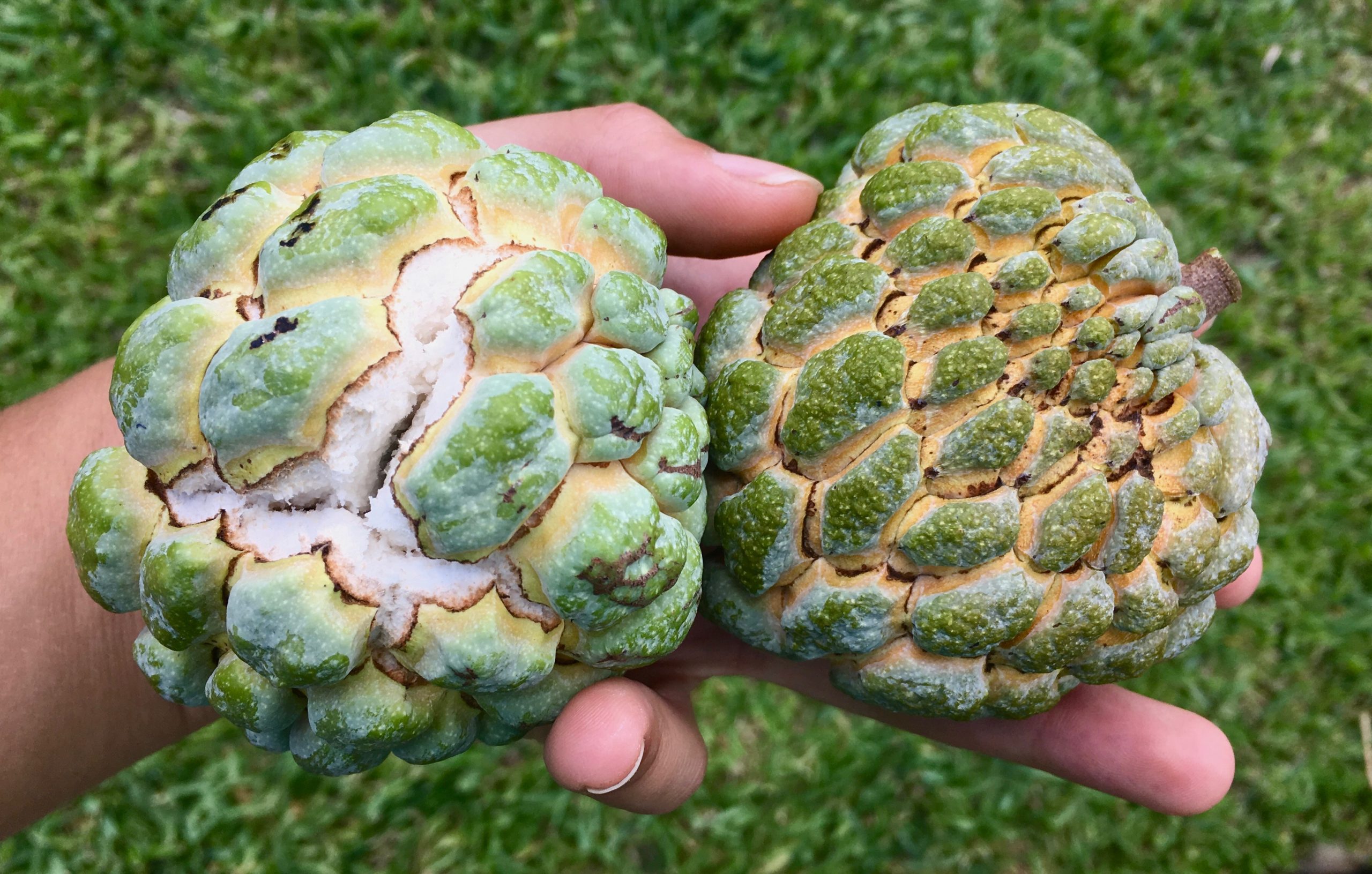
Introducing the Sugar Apple
The sugar apple is a tropical fruit that has creamy white flesh and a prehistoric looking skin. It is the most popular fruit in the Annona genus, so it is extensively grown around tropical regions of the world. This has led it to receive many names besides sugar apple such as: sweetsop in English and cherimoya or anón in Spanish. It is believed to be native to the Americas since it is wildly cultivated there.
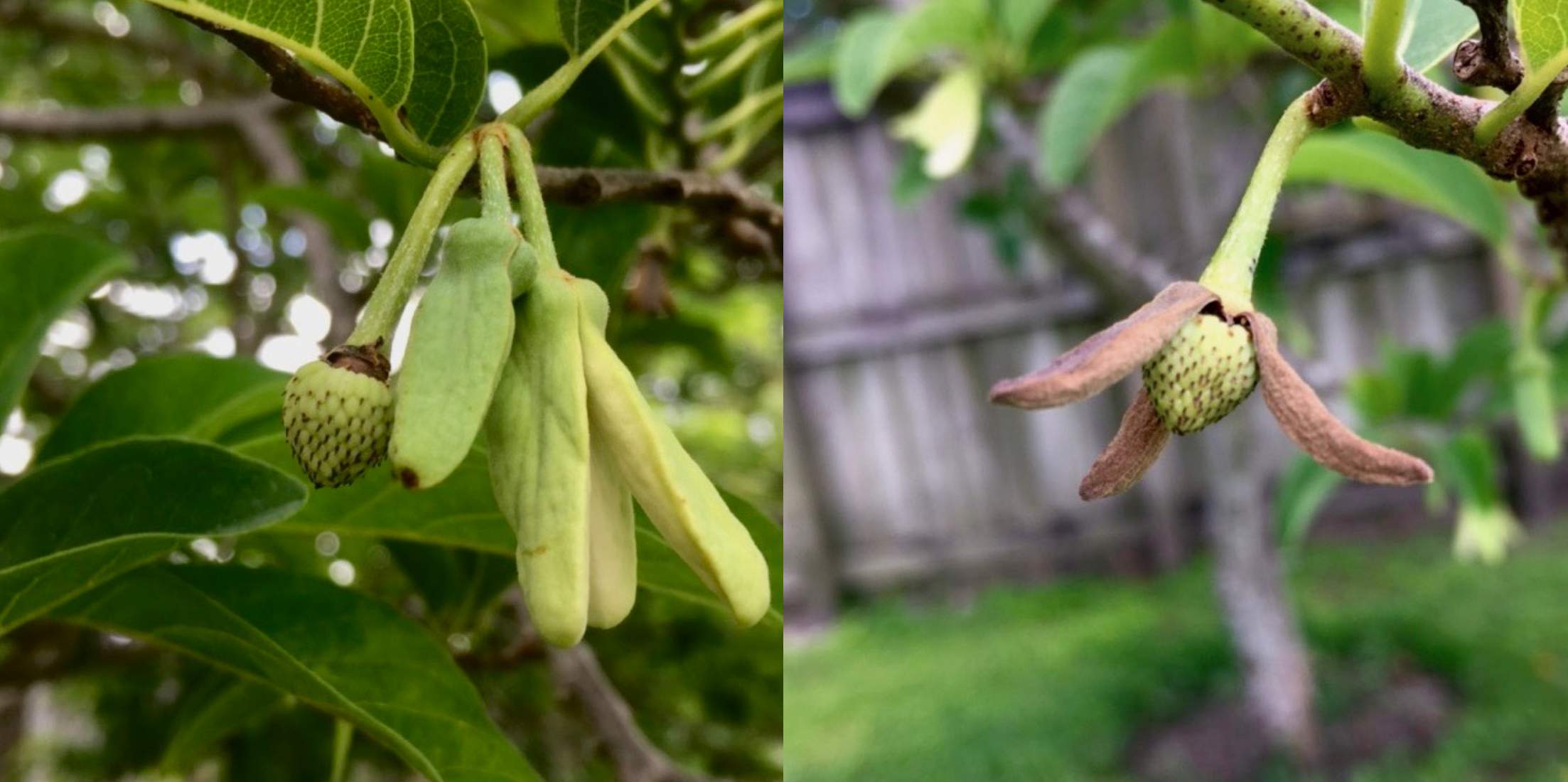
Growth Habit
The sugar apple tree grows up to 10 to 20 feet tall. The tree is deciduous so it loses its leaves in the fall. There is a common green variety of sugar apple and a more rare red variety, but I only have experience growing the green variety. The tree does best in a tropical climate, but it can be grown in sub-tropical regions too. It also does best growing in drier areas so it is considered to be a drought tolerant tree. Like many other fruit trees it can be grown and will fruit in a pot, however, it will thrive best when grown in the ground. The flowers are borne in small groups or completely separate from each other. They have three long petals that will never fully open. Sometimes hand pollination is required for adequate fruit set. A mature tree can produce 50-100 fruit in a season. I believe the tree is more susceptible to high winds then other fruit trees, because during hurricane Irma it was the our second tree that fell over.
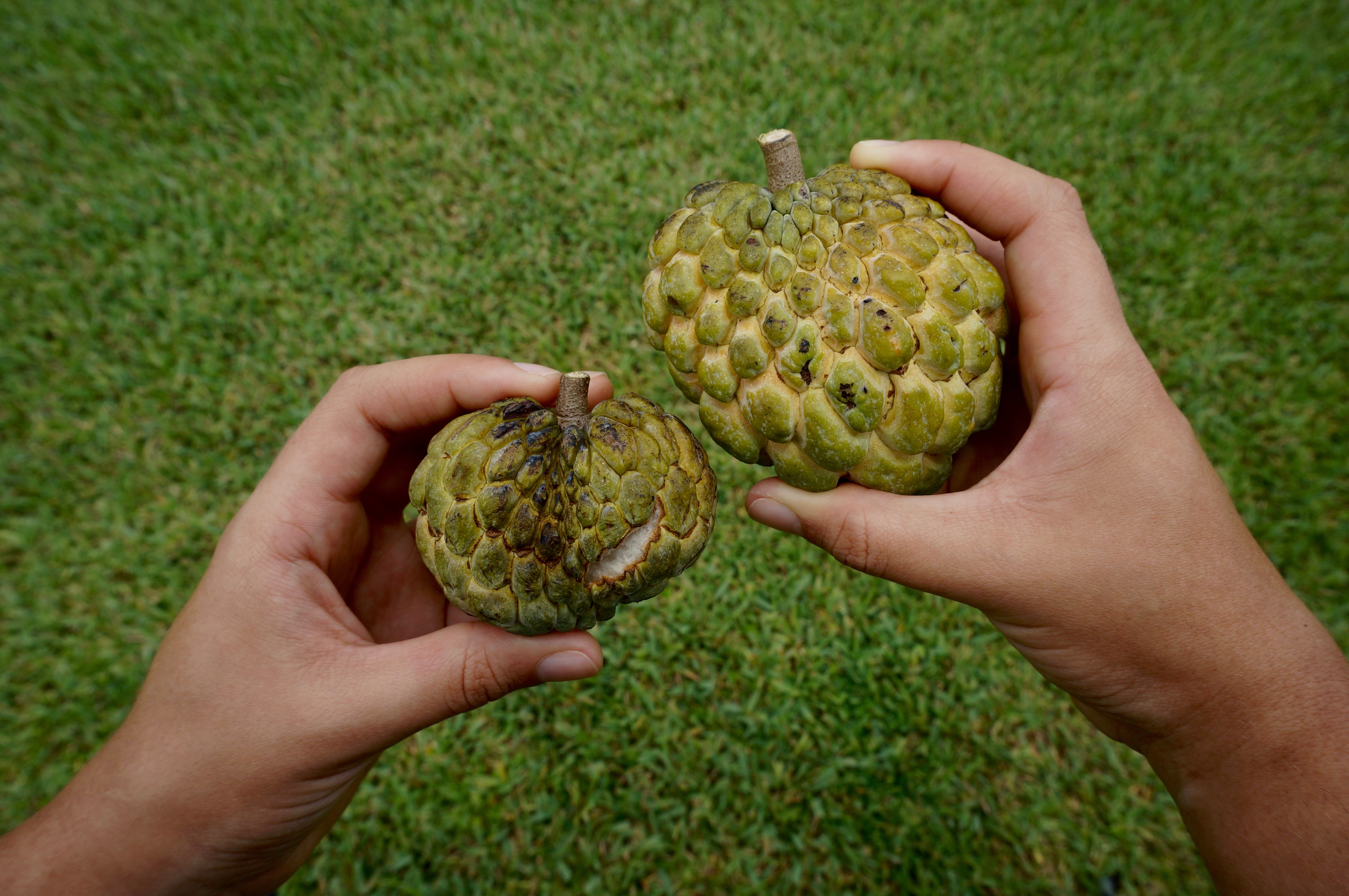
A sugar apple can be 2 to 4 inches long. The fruit has a thick segmented rind that easily breaks apart once it’s ripe. The white and creamy flesh contains multiple seeds. It is segmented, and almost each segment contains a black seed that cannot be eaten. All the segments surround a central core. This central core is attached to the woody stem that the fruit is borne on. When the fruit is left to completely ripen on the tree it becomes so soft that the core remains on the tree and the fruit breaks apart from it. This causes the fruit to be open and susceptible to rotting. In order to prevent this it is harvested before fully ripening. When the sugar apple is young the segments are greener and tightly packed together. As it begins to ripen the segments enlarge and separate. The ridges between the segments deepen and turn a light yellow color while the segments become light green. If the fruit begins to crack or is slightly soft then it is ready to harvest. It cannot be simply pulled of the tree since it is attached to a woody branch. In order to harvest it a pair of garden shears is required to cut the woody stem so that the fruit remains intact. It will then need to ripen fully off the tree.

Propagation
The sugar apple is frequently grown from seed. You can purchase seeds here. The seeds can remain viable for up to 4 years. The tree begins to bear fruit in 3 to 5 years, and the fruit are true to seed. Grafting is practiced when a certain cultivatar and early fruiting are required. The green variety is normally not grafted while the red variety is. Other forms of propagation such as cuttings and air layers do not have high rates of success. There are a several named cultivars, but for the home garden a seed grown tree is likely to produce an abundance of quality fruit.
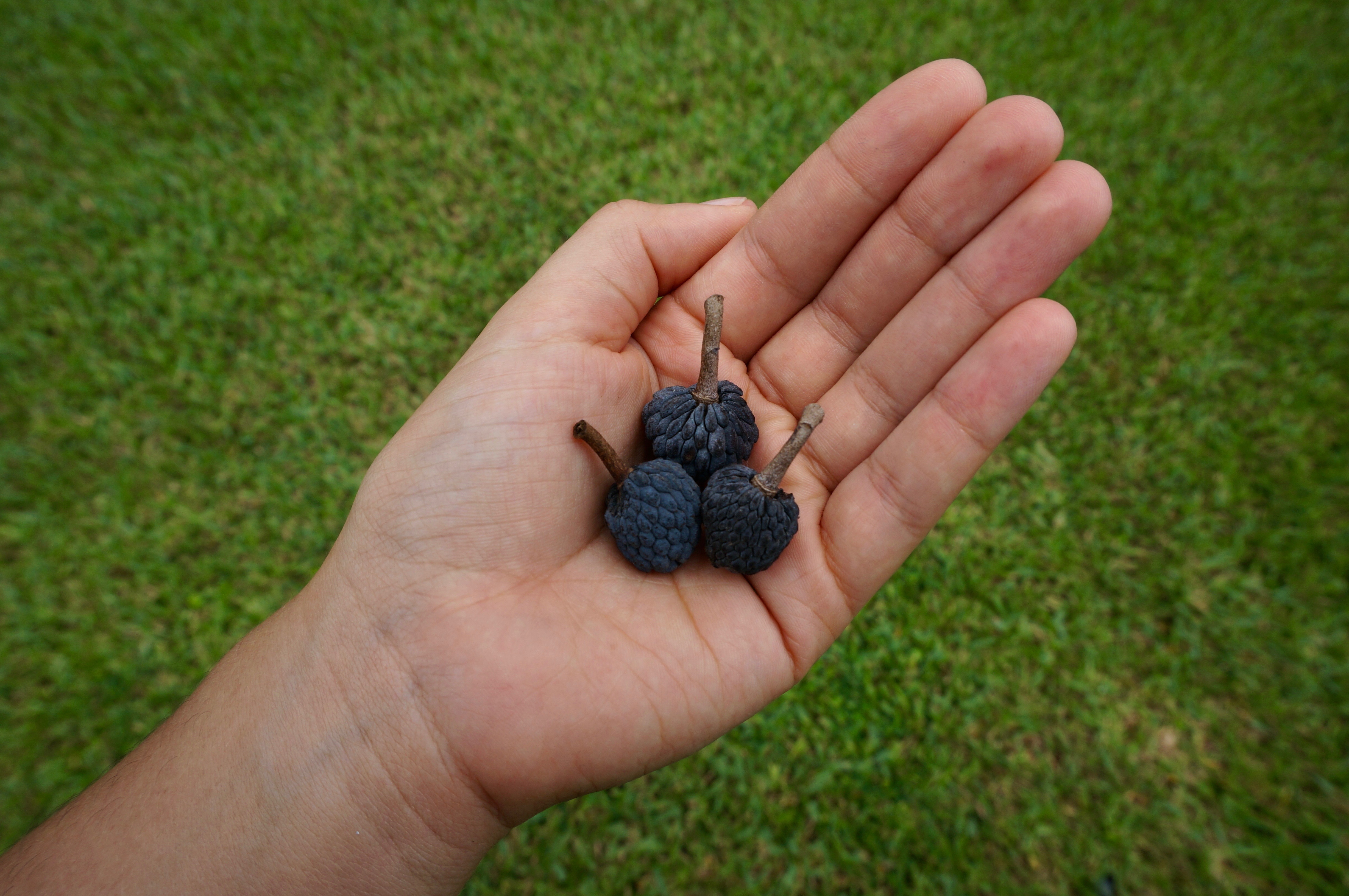
Pests and Diseases
In South Florida we have not experienced any serious pests or disease issues. Our most prominent issue is that birds and squirrels eat the fruit. We have aided this issue by placing an owl statue in the tree. We also have an issue with the young fruit sometimes turning purple and falling off as shown in the picture above. We believe this to be caused by the seed boring chalcid fly, Bephratelloides cubensis. Once it infests the fruit a fungus begins to mummify the young fruit. Some growers have had issues with the chalcid fly completely destroying their crop but that has not been the case with us since only a few fruit are effected. Despite these two issues we still get a substantial sugar apple harvest every summer.
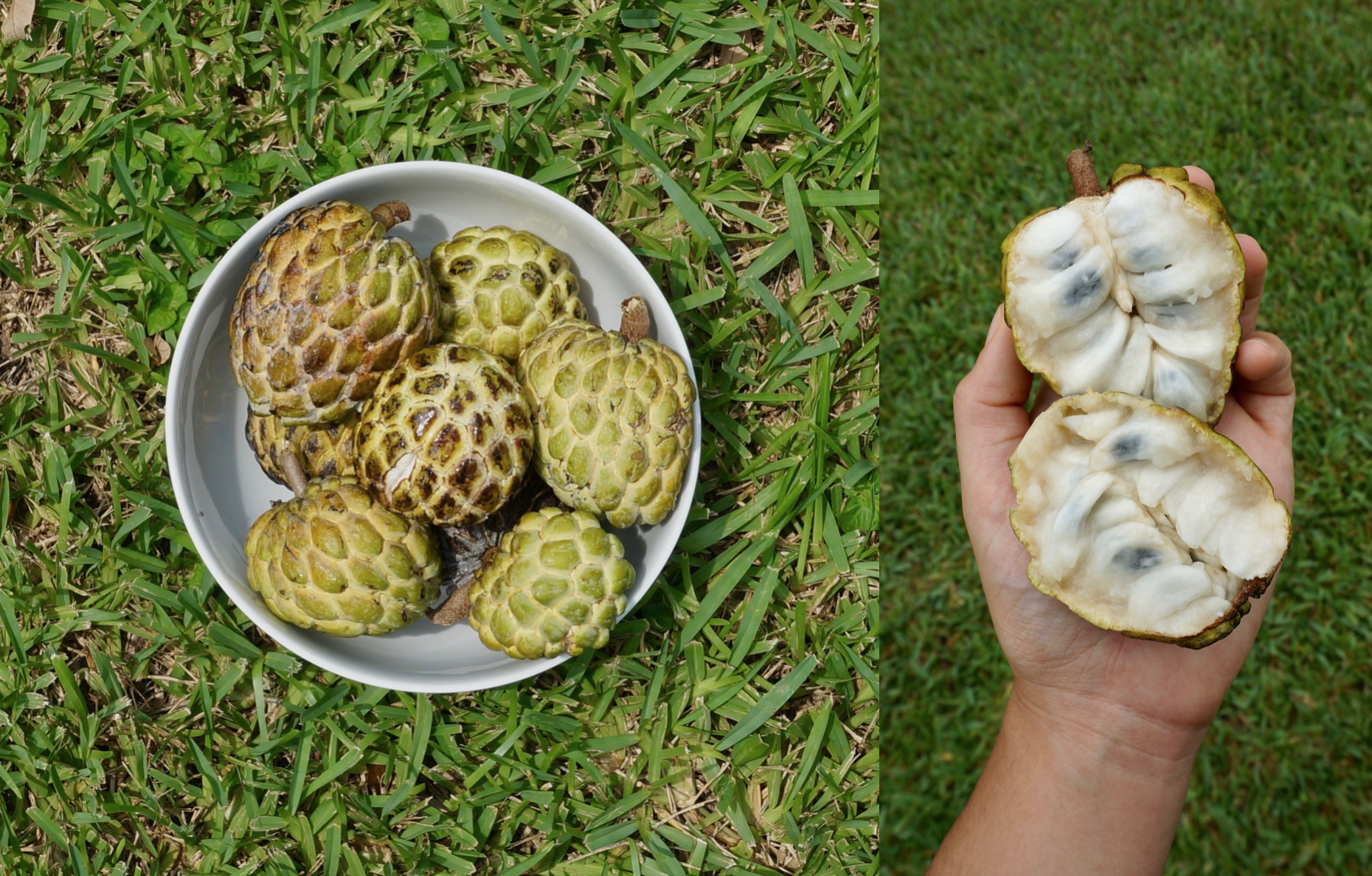
Uses
The sugar apple is very sweet, however, the flavor is mild. It can be eaten fresh as is, but some do not enjoy it because of all the seeds that need to be separated and spat out. When the fruit is very soft and ripe it can be stored in the refrigerator to prevent it from over ripening. The cold temperature causes no damage to the flesh, but it causes the outer skin to turn a brown-purple color. The flesh can also be scooped out and pressed through a sieve to separate the seeds. The creamy result can be eaten like a pudding or mixed with water to create a juice. The seeds are poisonous and should not be eaten. The powdered dry seeds can be used as an insecticide and it is sometimes mixed with water to create a paste to treat lice.
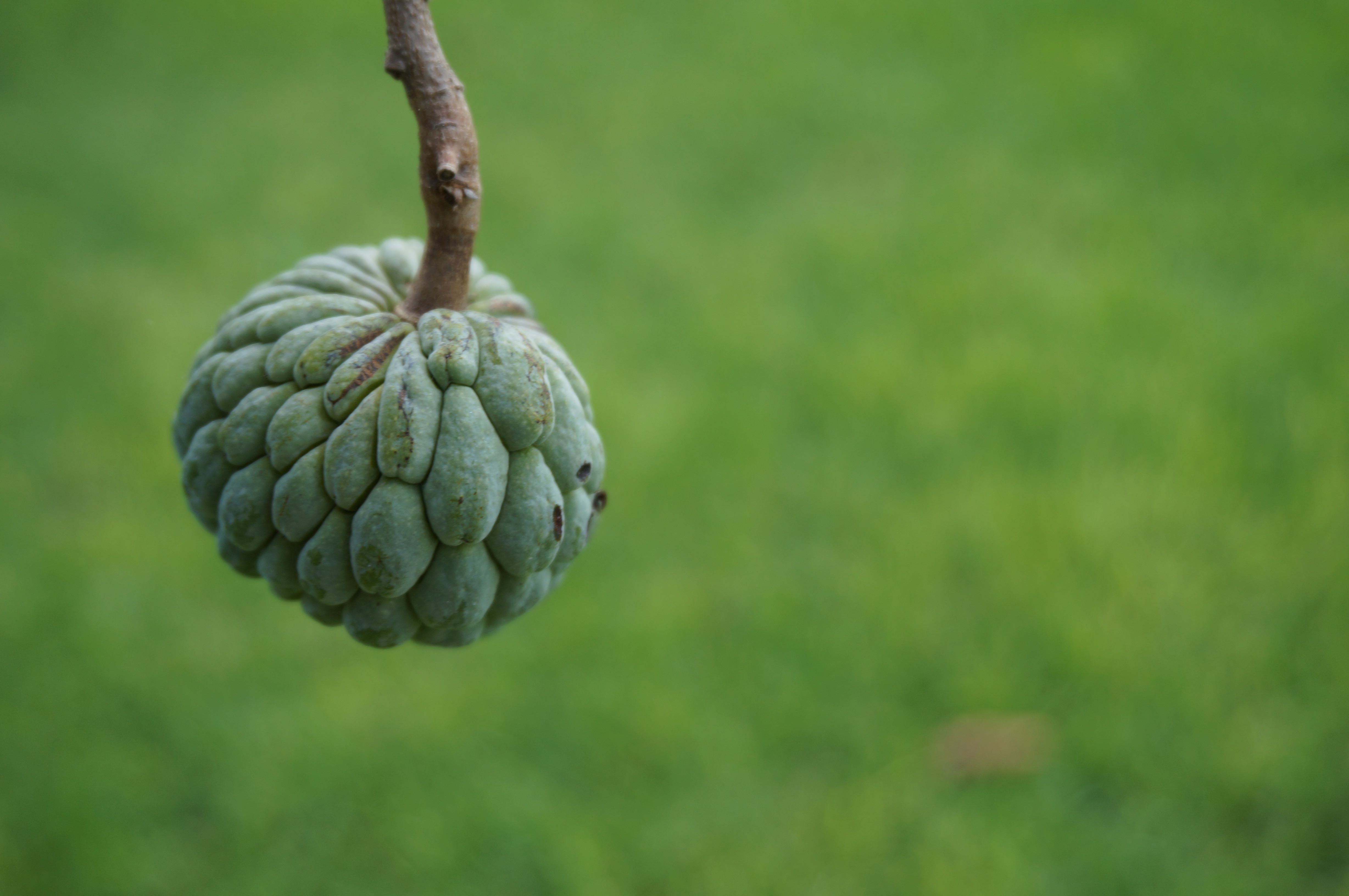
Have you ever eaten this fruit? Do you have your own sugar apple tree? Do you have any pest issues with your tree? Let me know down below in the comments. If you like this post be sure to subscribe so you don’t miss out on another one! Interested in learning more? Then be sure to watch my videos about the fruit that are posted down below.
This is not called Cherimoya in all of Cuba. This fruit the sugar apple is also called Anon in Havana.
Yes, I call it anón. Some people call it cherimoya. Cherimoya is also used for Annona cherimola in South America and in Cuba it is used for Annona reticulata.
I've eaten many of these seeds and I'm still alive
How different is this from Cherimoya or Atemoya?
Good question. They are a different species. Sugar apple is "Annona squamosa." Cherimoya is "Annona cherimola." Atemoya is a cross between Annona squamosa and Annona cherimola. A. squamosa fruits well in Florida and low elevation areas. It is smaller and more seedy than A. cherimola. A. cherimola only flowers and fruits in high elevation areas. They are native to the mountains of South America and there are some commercial growers in California. Atemoya is larger and less seedy than sugar apple and it can also flower and fruit in low elevation areas like the sugar apple. In Cuba the fruit Annona reticulata is called cherimoya, but some people call that custard apple. It is easier to use the scientific names as Annona species have a lot of different common names that conflict.
Wow, that sounds lovely!
I love this fruit. In Cuba you can find huge trees full of fruits.
Great profile of this fruit. I love all the details, especially about harvesting/ripeness. I find sugar apples pretty variable from tree to tree - some trees make bland fruit, some make spectacular tasting sugar apples.
It's interesting to hear that ripe sugar apples kept in the fridge will turn purple/black. Up here in North Florida, a number of us grow sugar apple and atemoya in minimal greenhouses, where the temp dips close to freezing many nights over winter. Any sugar apple or atemoya fruits ripening over winter turn that same purple black color right on the tree for us (while fruits ripening during warm months are a much more pleasing greenish yellow when ripe).
How interesting I never considered that the fruit would change color while still on the tree when it is cold outside!
I love this fruit! It would be great if it was more popular and widely accessible.
Yeah it would be! It isn't that accessible because it is difficult to ship it without it getting damaged.
My Salvadoran friends say the paw paw has a similar taste. They love paw paws.
Cool! Hopefully I get to try a paw paw soon.